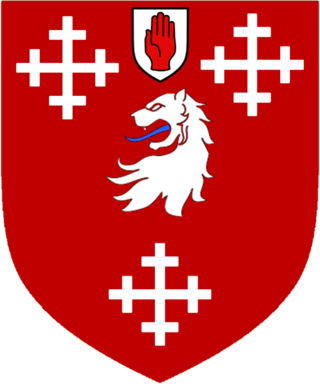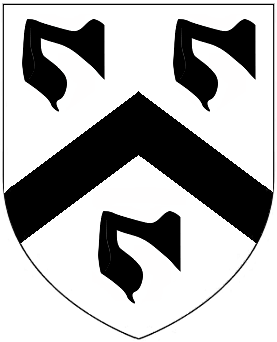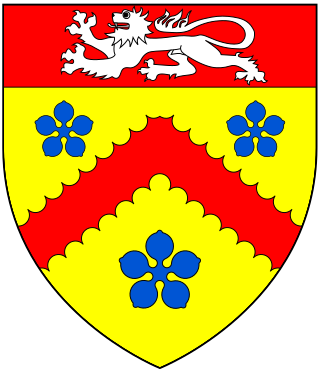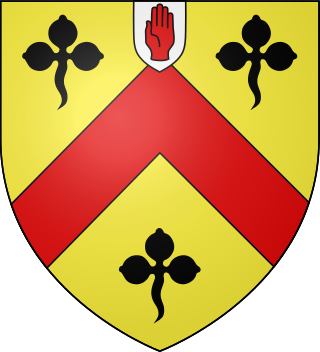
Earl of Yarmouth is a title that has been created three times in British history, once in the Peerage of England and twice in the Peerage of Great Britain. The first creation came in the Peerage of England in 1679 in favour of the politician and scientist Robert Paston, 1st Viscount Yarmouth. He had already been created Baron Paston and Viscount Yarmouth in the Peerage of England in 1673. He was the son of William Paston, who had been created a Baronet, of Oxnead in the County of Norfolk, in the Baronetage of England in 1641. Lord Yarmouth was succeeded by his son, the second Earl. He notably served as Treasurer of the Household between 1687 and 1689. He had no surviving male issue and the titles became extinct on his death in 1732.
There have been three baronetcies created for descendants of the ancient Lancashire family of Gerard.

There have been two baronetcies created for members of the Armytage family, one in the Baronetage of England and one in the Baronetage of Great Britain. One creation is extant as of 2008.
Sir Isaac Astley, 1st Baronet was an English baronet.
There have been five baronetcies created for persons with the surname Ward, one in the Baronetage of England, one in the Baronetage of Ireland and three in the Baronetage of the United Kingdom. See also Warde baronets.
John Astley may refer to:
Three baronetcies were created for persons with the surname D'Oyly, two in the Baronetage of England and one in the Baronetage of the United Kingdom. One creation is extant as of 2008.

There have been three baronetcies, all in the Baronetage of England, created for members of the Mansel family, which played a major role in the early re-settlement of the Gower Peninsula, in Glamorgan, Wales. Only one creation is extant as of 2008.

The Buckworth, later Buckworth-Herne, later Buckworth-Herne-Soame Baronetcy, of Sheen in the County of Surrey, is a title in the Baronetage of England. It was created on 1 April 1697 for John Buckworth, High Sheriff of London in 1704. The second Baronet sat as Member of Parliament for Weobley. The third Baronet was Assistant Gentleman Usher to George II. The fifth Baronet was Gentleman-Pensioner and Exon of the Guard during the reign of George III. He married Anne, daughter of Paston Herne, of Haveringland Hall, Norfolk, and assumed by Royal licence the additional surname of Herne. The sixth Baronet assumed in 1806 by Royal licence the additional surname of Soame in compliance with the will of Sir Peter Soame, 4th Baronet, of Thurlow. The ninth Baronet was a member of the Shropshire County Council.

There have been three baronetcies created for persons with the surname Cooke, two in the Baronetage of England and one in the Baronetage of Ireland. One creation is extant as of 2013.

There have been two baronetcies created for persons with the surname Yelverton, both in the Baronetage of England.
William Paston, 2nd Earl of Yarmouth FRS of Oxnead, Norfolk and Turnham Green, Chiswick, Middlesex was a British peer and politician.
The Blackwell Baronetcy, of Sprowston in the County of Norfolk, was a title in the Baronetage of Great Britain.
There have been two baronetcies- both extinct- granted to the Willises of Fen Ditton, both in the Baronetage of England.

The Palgrave Baronetcy, of Norwood Barningham in the County of Norfolk, was a title in the Baronetage of England. It was created on 24 June 1641 for John Palgrave, later member of parliament for Norfolk. The title became extinct on the death of the third Baronet in 1732.
Sir John Potts, 1st Baronet was an English politician who sat in the House of Commons from 1640 to 1648 and in 1660.
The Castleton Baronetcy, of St Edmundsbury in the County of Suffolk, was a title in the Baronetage of England. It was created on 9 August 1641 for William Castleton, High Sheriff of Suffolk from 1641 to 1642. The second Baronet was High Sheriff of Suffolk from 1660 to 1661. The sixth Baronet was Rector of Gillingham, Norfolk. The eleventh Baronet was Rector of Thornham, Norfolk. The title became extinct on the death of the twelfth Baronet in 1810.
Sir Philip Skippon, FRS, of Foulsham, Norfolk, Wrentham and Edwardstone, Suffolk, was an English traveller, writer, diarist, landowner and MP.

The Abdy baronetcy, of Felix Hall, in the County of Essex, was created in the Baronetage of England on 14 July 1641 for Thomas Abdy who was High Sheriff of Essex. The title became extinct in 1868.

The Hare baronetcy, of Stow Bardolph in the County of Norfolk, was created in the Baronetage of England on 23 July 1641 for Ralph Hare, Member of Parliament for Norfolk and King's Lynn. He was the great-grandson of Sir Nicholas Hare, Speaker of the House of Commons from 1539 to 1540, who purchased the Stow Bardolph estate in 1553.









